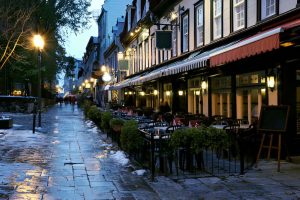
Thai cuisine is renowned worldwide for its vibrant flavors, fresh ingredients, and intricate balance of sweet, sour, salty, and spicy tastes. Alongside the culinary artistry, the ambiance and aesthetics of Thai restaurants play a crucial role in delivering an authentic dining experience.
However, maintaining the authenticity and charm of Thai restaurants requires careful attention to building maintenance. In this article, we delve into the strategies for preserving the Thai taste through effective restaurant building maintenance.
Thai Restaurant Architectural Elements
Exploring the intricate tapestry of Thai architectural elements unveils a journey through time, culture, and craftsmanship. Thai architecture, deeply rooted in history and tradition, reflects the country’s diverse cultural heritage and spiritual beliefs.
From the soaring spires of Buddhist temples to the elegant curves of traditional houses, each architectural element carries profound symbolism and significance. This exploration delves into the materials, styles, and influences that shape Thai architecture.
Revealing a fascinating blend of indigenous craftsmanship, religious iconography, and regional diversity. For those interested in maintaining these remarkable structures, you may find building maintenance services at Odyssey Construction & Fitout.
Traditional Building Materials
Traditional Thai architecture is renowned for its use of locally sourced materials, carefully selected for their durability, sustainability, and aesthetic appeal. One of the primary materials used in traditional Thai construction is teak wood, prized for its strength, resistance to decay, and beautiful grain patterns.
Teak is often employed in the construction of structural elements such as columns, beams, and intricate wooden carvings, lending warmth and character to buildings. In addition to teak, clay tiles are commonly used for roofing, providing excellent insulation against tropical heat and heavy rainfall.
Religious Symbolism in Thai Restaurants
Religious Symbolism in Thai Architecture permeates every aspect of design, serving as a profound expression of the country’s spiritual beliefs and cultural heritage. In Buddhist temples, or “wats,” architectural elements are laden with symbolic significance.
The soaring spires, known as “chedis” or “stupas,” symbolize Mount Meru, the mythical center of the universe in Buddhist cosmology, while their multiple tiers represent the various stages of enlightenment.
Intricate carvings and sculptures adorning temple facades depict scenes from Buddhist scriptures and the lives of revered monks, offering worshippers visual narratives of the faith.
Architectural Styles Across Regions

Thailand’s architectural diversity is further highlighted by the distinct regional styles that have evolved over the centuries. In the central region, exemplified by the ancient capital of Ayutthaya and the bustling metropolis of Bangkok, architectural styles reflect the influence of neighboring civilizations, blending traditional Thai elements with Khmer, Chinese, and European architectural motifs.
The soaring prangs (tower-like structures) of Ayutthaya’s temples and the grandiose palaces of Bangkok’s Rattanakosin era illustrate the opulence and majesty of central Thai architecture.
Influence of Royal Palaces and Court Architecture
The grandeur of Thailand’s royal palaces, such as the Grand Palace in Bangkok, showcases a blend of traditional Thai architecture with European influences, reflecting centuries of royal patronage and diplomatic exchange.
Sustainability and Adaptability in Thai Architecture
Historically, Thai architecture demonstrates a keen understanding of climatic conditions, with features such as raised floors, louvered windows, and steeply pitched roofs designed to maximize natural ventilation and protect against the elements.
Today, architects continue to draw inspiration from traditional techniques to create sustainable, climate-responsive buildings for the modern era.
Traditional Thai Architecture
Thai architecture is characterized by its intricate designs, vibrant colors, and unique structural elements. Traditional Thai buildings often feature sloping roofs, intricate wooden carvings, and elevated floors. These elements reflect Thailand’s rich cultural heritage and are integral to the ambiance of Thai restaurants.

Key Architectural Features
Sloping Roofs: The distinctive sloping roofs of Thai buildings serve both functional and aesthetic purposes. They are designed to withstand heavy rainfall common in tropical climates while also adding an elegant touch to the overall structure.
Wooden Carvings: Intricate wooden carvings adorn many traditional Thai buildings, showcasing exquisite craftsmanship and attention to detail. These carvings often depict mythological figures, floral motifs, or scenes from Thai folklore, adding a sense of cultural richness to the architecture.
Elevated Floors: Elevated floors, a common feature in Thai architecture, help protect buildings from flooding during the rainy season. Additionally, they provide a sense of elevation and grandeur, enhancing the visual appeal of the space.
Strategies for Effective Maintenance
Strategies for Effective Maintenance offers invaluable insights into optimizing maintenance practices across various industries. From predictive maintenance techniques to proactive asset management strategies.
This comprehensive guide equips professionals with the knowledge and tools necessary. To maximize equipment uptime, reduce operational costs, and enhance overall productivity.
Whether you’re in manufacturing, facilities management, or any other field requiring maintenance, this resource provides practical solutions to ensure smooth operations and prolonged asset lifespan.
Regular Inspections and Maintenance
Implementing a proactive approach to building maintenance is essential for preserving the authenticity of Thai restaurants. Regular inspections should be conducted to identify any signs of damage or deterioration, allowing for timely repairs and preventative measures.
Weatherproofing
Protecting the building against environmental factors is crucial for maintaining its structural integrity. Weatherproofing measures, such as sealing gaps and cracks, and applying protective coatings. And ensuring proper drainage can help prevent water damage and deterioration caused by humidity and rainfall.
Preservation Techniques
Employing traditional preservation techniques can help prolong the lifespan of architectural elements and maintain their authenticity. For example, treating wooden carvings with natural oils or varnishes. Can protect them from decay and insect infestations, while still allowing their beauty to shine through.

Professional Restoration
In cases where significant damage has occurred, seeking professional restoration services is recommended. Experienced craftsmen skilled in traditional Thai techniques can repair and restore. Architectural elements to their original glory, ensuring that the restaurant retains its authentic charm.
Conclusion
Preserving the Thai taste goes beyond just culinary expertise; it extends to the ambiance and architectural authenticity of Thai restaurants. By implementing effective building maintenance strategies. Restaurant owners can ensure that the charm and cultural richness of Thai architecture are upheld for generations to come.
Through regular inspections, weatherproofing measures, and preservation techniques. Thai restaurants can continue to provide diners with an immersive and authentic dining experience. That captures the essence of Thailand’s culinary and architectural heritage.






